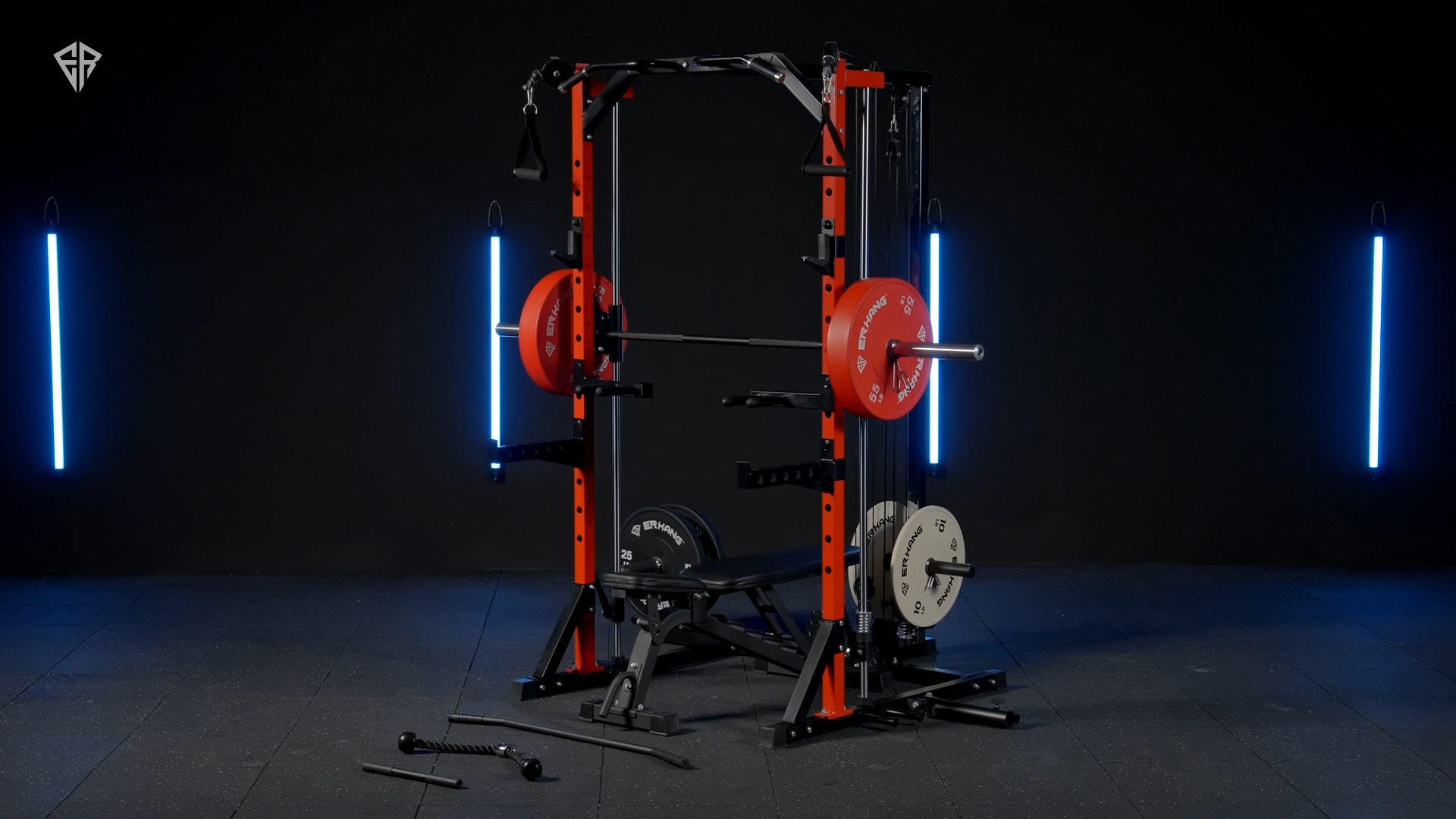
The Ultimate Guide to Choosing the Best Power Rack for Your Home Gym
If you’re serious about building a home gym, a power rack (also known as a squat rack or power cage) is an essential piece of equipment. It’s versatile, allowing you to perform a variety of strength training exercises safely. This comprehensive guide will help you understand the benefits of a power rack, what features to look for, and how to choose the best one for your needs.
What is a Power Rack?
A power rack is a sturdy, rectangular piece of fitness equipment designed to support weightlifting exercises such as squats, bench presses, and deadlifts. It typically consists of four vertical posts connected by horizontal bars, with adjustable safety bars and hooks for holding a barbell.
Benefits of Using a Power Rack
- Safety: Power racks provide adjustable safety bars that catch the barbell if you fail a lift, preventing injury.
- Versatility: With a power rack, you can perform a wide range of exercises, including squats, bench presses, deadlifts, pull-ups, and more.
- Strength Building: Power racks allow you to lift heavy weights safely, making them ideal for strength training.
- Convenience: Having a power rack at home means you can work out anytime without the need for a gym membership.
Key Features to Consider
When choosing a power rack, consider the following features to ensure it meets your needs:
- Weight Capacity: Ensure the power rack can handle the maximum weight you plan to lift. A good power rack should support at least 700-1000 pounds.
- Adjustability: Look for racks with adjustable safety bars and J-hooks to accommodate different exercises and user heights.
- Stability: A stable power rack is crucial for safety. Check for a wide base and solid construction materials like heavy-duty steel.
- Size: Measure your available space to ensure the power rack will fit comfortably in your home gym. Consider the height, width, and depth.
- Additional Attachments: Some power racks come with additional features like pull-up bars, dip stations, and lat pulldown attachments. These can enhance the versatility of your workouts.
Top Power Rack Recommendations
-
Rogue R-3 Power Rack
- Weight Capacity: 1000 lbs
- Features: Westside hole spacing, sturdy 11-gauge steel construction, optional add-ons like safety straps and dip bars.
- Pros: Extremely durable, customizable, trusted brand.
- Cons: Expensive, may be overkill for beginners.
-
Rep Fitness PR-1100 Home Gym Power Rack
- Weight Capacity: 700 lbs
- Features: Dual pull-up bars, optional dip handles, and landmine attachment.
- Pros: Affordable, versatile, compact.
- Cons: Lower weight capacity, less heavy-duty than some competitors.
-
Fitness Reality 810XLT Super Max Power Cage
- Weight Capacity: 800 lbs
- Features: Lat pulldown attachment, adjustable safety bars, multi-grip pull-up bar.
- Pros: Great value, versatile, includes several attachments.
- Cons: Assembly can be challenging, slightly less stable.
How to Use a Power Rack Safely
- Warm Up: Always warm up before lifting heavy weights to prevent injury.
- Proper Form: Maintain proper form for each exercise to maximize effectiveness and reduce the risk of injury.
- Set Safety Bars: Adjust the safety bars to the appropriate height for each exercise. They should be set just below the lowest point of your range of motion.
- Progress Gradually: Increase the weight gradually to avoid overloading your muscles and joints.
- Have a Spotter: If possible, have a workout partner spot you during heavy lifts for added safety.
Conclusion
A power rack is a valuable investment for anyone serious about strength training. By considering factors such as weight capacity, adjustability, stability, size, and additional features, you can find the perfect power rack at Gym-Mikolo for your home gym. Remember to prioritize safety and proper form to get the most out of your workouts. With the right power rack, you can achieve your fitness goals from the comfort of your own home.


